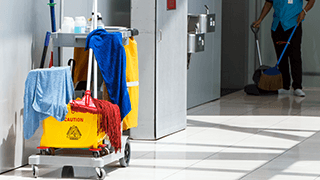Perfect Cleaning and Disinfection

The ability of a thermal process to reduce microbial load to an acceptable level is influenced by the number of bacteria present in the product before the start of heat treatment. Inspect raw materials, ingredients and containers upon receipt to ensure they are suitable for processing. Refer to Ingredients, Materials and Non-Food Chemicals Received for advice on preventive control measures for materials received from outside, for example, written specifications and supplier approval. With the right disinfection services you can find the best deals now.
Minimize microbial contamination and growth in raw materials and ingredients before heat treatment. Commonly used containers include rigid containers such as cans and glass jars, as well as semi-rigid or flexible containers such as sachets and cartons. A container must be able to withstand heat treatment and maintain its seal throughout the product’s shelf life.
Source containers which meet the criteria established in the scheduled treatment and which can withstand the constraints of the subsequent handling steps: Refer to the Guidelines for Building Materials, Packaging Materials and Non-Food Chemicals for Food Establishments for the recommended options for ensuring that the containers are adequate.
Control of empty containers
Control handling of empty containers to minimize damage and prevent damaged, defective, or contaminated containers from being used, for example:

Handle and transfer containers to minimize damage and the risk of contamination, such as those caused by forklifts, conveyors, and transfer points,
Before use, monitor containers for damage that could compromise final integrity such as cracks and fractures and contamination such as glass, rust and foreign bodies.
Cleaning the containers
Make sure to fill only clean containers, for example:
- Immediately before filling, clean the rigid containers in the inverted position, for example using an air jet, water or a suction system,
- Use only potable water or steam,
- Use suitable detergents or disinfectants for this purpose
Protect clean containers to avoid contamination before filling, for example:
Do not leave unprotected containers on the line between the cleaner and the filler during breaks, during cleaning or extended downtime. Set up a glass breakage control procedure for chains where there are glass containers and for other cases of glass breakage such as broken glass bulb thermometers.
Empty container registers
Keep a register of the use of empty containers per batch and a register of checks on damage caused during handling of the containers and visual monitoring of empty containers. Keeps a record demonstrating the control of broken glass?
Control of product preparation and mixing
Control the critical factors indicated in the scheduled processing and formulation during preparation and mixing to minimize the risks to food safety. Here are examples of control of critical factors related to the preparation and mixing of products:
- Size control, such as dicing, grinding, slicing,
- Process temperature control, as required for heating, blanching, thawing and cooling,
- Humidity control, such as rehydration and concentration viscosity, Brix degree,
- Dosing control, such as weighing, volumetric control dosing,
- PH or acidity control, such as measurement of pH and titration acidity for pectin formation,
- Additives such as preservatives and firming agents.
Control the time and temperature during the preparation, mixing and storage of materials during manufacture to avoid conditions that could lead to excessive microbial growth or the production of enterotoxins by Staphylococcus aureus.
